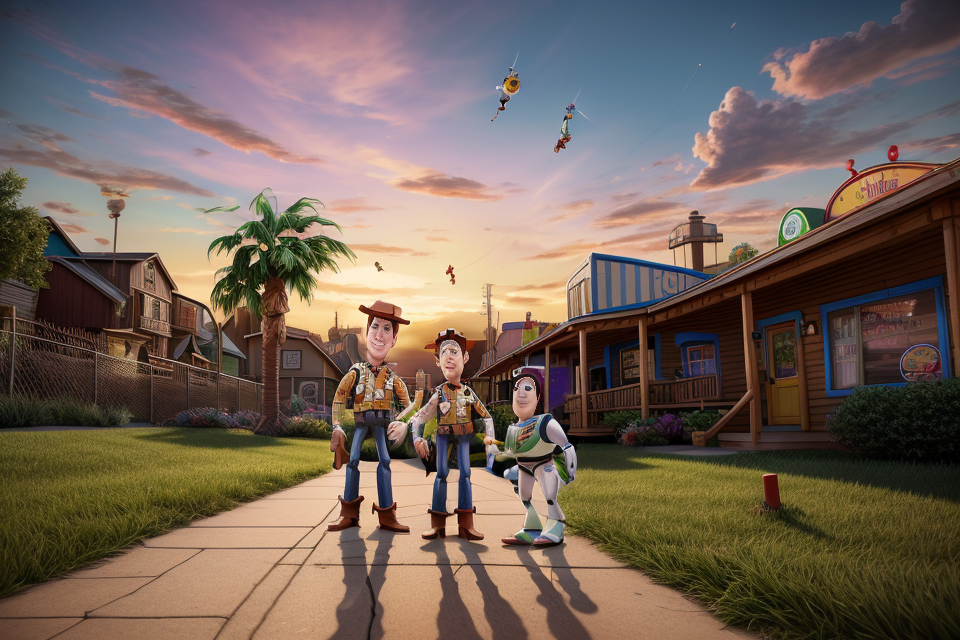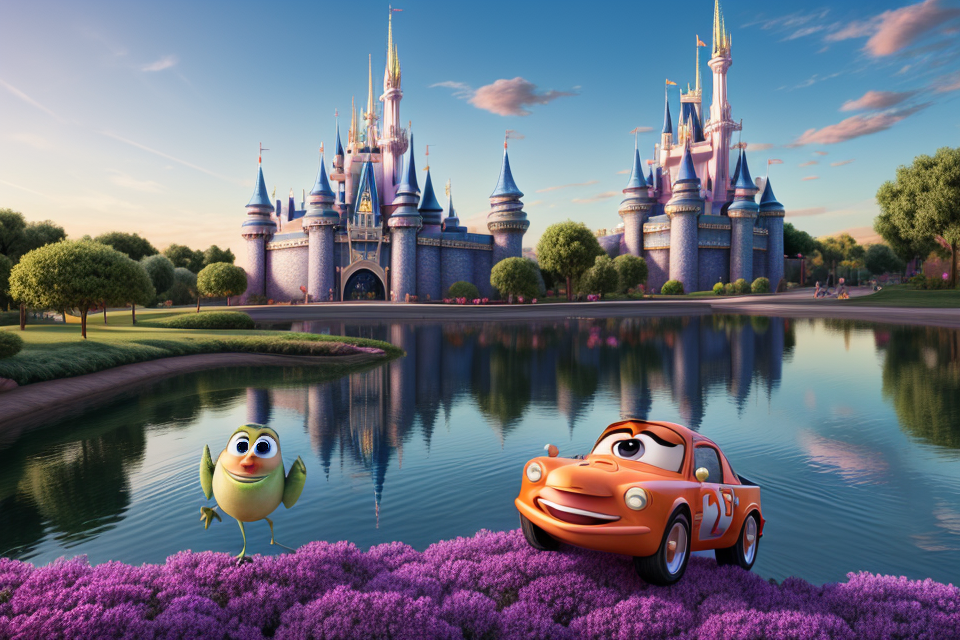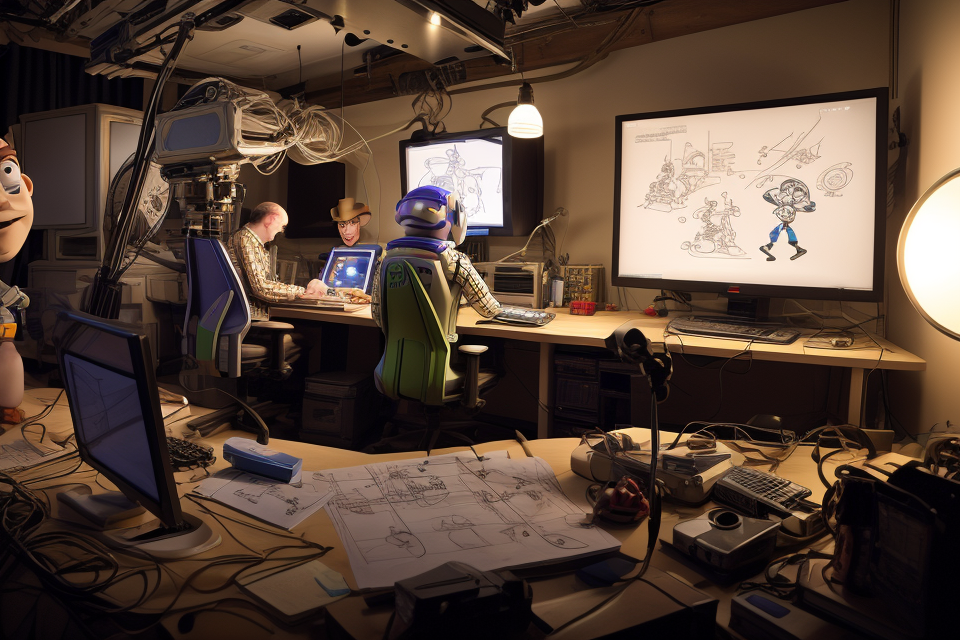
Description: This article delves into the significance of the Pixar film Toy Story, examining its impact on animation, pop culture, and the toy industry. From its groundbreaking animation techniques to its timeless themes and memorable characters, Toy Story has left an indelible mark on the world of cinema and beyond. Through an exploration of its cultural significance, this article aims to shed light on why Toy Story remains a beloved classic to this day.
In the world of animation and pop culture, one film has stood the test of time and has left an indelible mark on the industry. That film is none other than Toy Story, the groundbreaking animated film by Pixar Animation Studios. Since its release in 1995, Toy Story has become a beloved classic, capturing the hearts of audiences of all ages with its endearing characters, witty dialogue, and memorable storytelling. But beyond its box office success and critical acclaim, Toy Story has also had a profound impact on the animation industry and pop culture as a whole. In this exploration of its importance, we will delve into the lasting legacy of Toy Story and how it has changed the game for animation and pop culture.
The Influence of Toy Story on Animation
The Revolution of Computer-Animated Films
In the realm of animation, Toy Story stands as a watershed moment, ushering in a new era of computer-animated films that would forever change the landscape of the industry. This groundbreaking film not only redefined the boundaries of animation but also established Pixar as a dominant force in the field, paving the way for a plethora of critically acclaimed and commercially successful animated films that would follow in its wake.
One of the most significant impacts of Toy Story was its revolution of the computer-animated film. Prior to its release, the majority of animated films were produced through traditional means, utilizing hand-drawn techniques and stop-motion animation. However, with the advent of computer-generated imagery (CGI), Pixar was able to create a wholly new form of animation that would not only capture the hearts and imaginations of audiences worldwide but also set the stage for a new era of cinematic storytelling.
The shift towards computer-animated films was not without its challenges, however. The process of creating a fully computer-animated feature film was still in its infancy, and Pixar faced numerous obstacles in their quest to bring Toy Story to the big screen. From the development of the necessary software and hardware to the training of artists and animators in the new techniques, the journey was fraught with difficulties.
Despite these challenges, the success of Toy Story served as a catalyst for the growth and evolution of computer-animated films. In the years that followed, a plethora of animated films, both feature-length and short, would be produced using CGI, many of which would go on to achieve critical acclaim and commercial success. From Pixar’s own Monsters, Inc. and Finding Nemo to DreamWorks’ Shrek and Disney’s Frozen, the influence of Toy Story can be seen in the vibrant, lifelike animation and engaging storytelling that has become the hallmark of modern animated films.
In conclusion, the revolution of computer-animated films ushered in by Toy Story cannot be overstated. The film not only reshaped the animation industry but also established Pixar as a dominant force in the field, paving the way for a new era of cinematic storytelling. Its impact can be seen in the countless animated films that have followed in its wake, all of which have sought to capture the magic and wonder that made Toy Story such a beloved classic.
The Evolution of Animation Techniques
Toy Story was a groundbreaking film in many ways, and its impact on the animation industry is one of the most significant. The film’s use of computer-generated animation (CGI) revolutionized the animation industry and paved the way for new techniques and technologies.
One of the most notable aspects of Toy Story’s animation is its use of computer-generated imagery (CGI). This technology allowed animators to create more realistic and detailed characters and environments than ever before. The characters in Toy Story were created using a process called “rasterization,” which involved converting the characters’ wireframe models into 3D polygons. This process allowed the animators to create characters that looked and moved more like real people.
Another significant development in Toy Story’s animation was the use of “keyframe animation.” This technique involved creating a series of poses for a character and then using software to smoothly transition between them. This allowed for more fluid and natural-looking movements than traditional “tweening” techniques, which involved simply interpolating between two poses.
The use of these new techniques in Toy Story not only improved the look and feel of the animation but also made it possible to create more complex and detailed scenes. The film’s creators were able to create more intricate backgrounds and set pieces than would have been possible with traditional animation methods.
Since the release of Toy Story, the animation industry has continued to evolve and improve. Many of the techniques used in Toy Story have become standard in the industry, and new technologies have been developed that have further advanced the possibilities of computer-generated animation. The ongoing influence of Toy Story on contemporary animation can be seen in the many films and television shows that use similar techniques and styles.
The Cultural Significance of Toy Story
The Timeless Themes of Toy Story
The themes of friendship, loyalty, and growth explored in Toy Story are timeless and continue to resonate with audiences of all ages. These themes are universal and can be applied to many different situations, making the film relatable to a wide range of people.
- Friendship: One of the most prominent themes in Toy Story is the importance of friendship. The film shows the value of having friends and how they can support and encourage each other through difficult times. This theme is particularly important for children, as it teaches them the importance of building and maintaining relationships with others.
- Loyalty: Another theme that is prominent in Toy Story is loyalty. The characters in the film are loyal to each other, even when faced with challenges and obstacles. This theme is important for teaching children about the importance of being reliable and dependable, and the value of standing by their friends.
- Growth: Finally, Toy Story explores the theme of growth and change. The characters in the film grow and develop throughout the story, learning new things and adapting to new situations. This theme is important for children, as it teaches them about the importance of learning and growing, and how they can adapt to new situations and challenges.
Overall, the timeless themes of Toy Story continue to be relevant and important to audiences of all ages. These themes are universal and can be applied to many different situations, making the film relatable to a wide range of people.
The Impact of Toy Story on Pop Culture
- The rise of Toy Story merchandise and tie-in products
- Action figures and dolls of the main characters
- Toy Story-themed clothing and accessories
- Toy Story-branded toys and games
- The enduring popularity of the Toy Story franchise
- The continued success of the Toy Story films, with each new release generating excitement and anticipation
- The beloved status of the characters, who have become icons of popular culture
- The lasting appeal of the themes and messages of the films, which continue to resonate with audiences of all ages
- The influence of Toy Story on other media, such as television and video games
- The development of Toy Story-inspired television shows and specials
- The creation of Toy Story-themed video games, which have been critical and commercial successes
- The incorporation of Toy Story elements into other media, such as theme parks and live events, further solidifying the franchise’s impact on pop culture.
The Legacy of Toy Story in the Toy Industry
The Influence of Toy Story on Toy Design
The impact of Toy Story on the design of toys and playthings
The release of Toy Story in 1995 marked a significant turning point in the toy industry. The film’s groundbreaking animation and engaging storyline captivated audiences of all ages, and its impact on the toy industry was immediate and profound.
Toy manufacturers quickly recognized the potential of the movie to influence toy design, and a new wave of toys and playthings based on the film began to emerge. Toys that had previously been considered outdated or unpopular suddenly became popular again, and new toys were designed that reflected the characters and themes of the movie.
The popularity of Toy Story-inspired toys and playsets
The popularity of Toy Story-inspired toys and playsets was unprecedented. The toys were highly sought after by children and collectors alike, and they quickly became some of the most popular toys of the 1990s.
The success of these toys was due in part to their high level of detail and accuracy. The toys were designed to look and function just like the characters in the movie, and they were often highly interactive, with moving parts and sound effects.
The influence of Toy Story on the design of other toys and playthings
The influence of Toy Story on toy design was not limited to the toys themselves. The movie also had a significant impact on the way that toys were designed and marketed.
Toy manufacturers began to incorporate more advanced technology into their toys, such as sound and light effects, in order to make them more interactive and engaging. They also began to focus more on the storytelling aspect of toys, creating playsets and scenarios that allowed children to act out scenes from their favorite movies and TV shows.
In addition, the success of Toy Story helped to pave the way for other animated movies and TV shows to be adapted into toys and playthings. As a result, the toy industry has continued to evolve and expand, with new and innovative toys and playthings being developed all the time.
Overall, the influence of Toy Story on toy design has been significant and far-reaching. The movie’s impact on the toy industry has been felt for over two decades, and its legacy continues to be felt today.
The Continued Success of Toy Story
The Toy Story franchise has continued to be a success in the toy industry since its inception in 1995. Its enduring popularity has made it a staple in popular culture, and its continued relevance has kept it relevant in today’s pop culture landscape.
The Box Office Success of the Toy Story Franchise
The Toy Story franchise has been a box office success, with each film in the series grossing billions of dollars worldwide. The original Toy Story was a critical and commercial success, and its sequels, Toy Story 2 (1999) and Toy Story 3 (2010), continued the franchise’s success. Toy Story 4 (2019) was also a box office success, grossing over $1 billion worldwide.
The Enduring Popularity of the Franchise among Audiences of All Ages
Toy Story has remained popular among audiences of all ages since its release in 1995. Its timeless themes and relatable characters have made it a beloved classic, and its continued popularity has led to a renewed interest in the franchise. The franchise’s enduring popularity has led to a resurgence in the popularity of its merchandise, with new toys and merchandise being released to coincide with the release of each new film.
The Continued Relevance of Toy Story in Today’s Pop Culture Landscape
Toy Story remains relevant in today’s pop culture landscape, with its themes and characters continuing to resonate with audiences. Its timeless themes of friendship, loyalty, and imagination continue to be relevant, and its impact on the animation industry is still felt today. The franchise’s continued relevance has led to a renewed interest in its merchandise, with new toys and merchandise being released to coincide with the release of each new film.
FAQs
1. What is Toy Story about?
Toy Story is a 1995 American computer-animated film produced by Pixar Animation Studios and released by Walt Disney Pictures. It tells the story of a group of anthropomorphic toys who come to life when humans are not around. The main characters are Woody, a cowboy doll, and Buzz Lightyear, an astronaut action figure. The plot revolves around their adventures and struggles as they try to navigate a new world where they must confront their fears and learn to work together.
2. Why is Toy Story important in pop culture?
Toy Story is considered one of the most influential films in pop culture. It was the first feature-length computer-animated film and helped establish Pixar as a leader in the animation industry. The film’s innovative use of computer animation, memorable characters, and engaging storytelling have made it a beloved classic that has been embraced by audiences of all ages.
3. What impact did Toy Story have on animation?
Toy Story had a significant impact on the animation industry. Its use of computer animation revolutionized the way animated films were made, leading to a surge in the production of computer-animated films. The film’s success also paved the way for future Pixar films, such as Monsters, Inc., Finding Nemo, and The Incredibles, which have become beloved classics in their own right.
4. How has Toy Story influenced pop culture?
Toy Story has had a lasting impact on pop culture. The film’s characters, such as Woody and Buzz Lightyear, have become iconic figures and are often featured in merchandise, such as toys and clothing. The film’s influence can also be seen in other areas of pop culture, such as music and fashion. The film’s memorable soundtrack, which includes songs like “You’ve Got a Friend in Me,” has become a staple of pop culture.
5. What is the legacy of Toy Story?
The legacy of Toy Story is that it has become a beloved classic that continues to resonate with audiences today. The film’s themes of friendship, loyalty, and perseverance have made it a timeless classic that continues to inspire new generations of viewers. The film’s enduring popularity has led to multiple sequels, with the latest installment, Toy Story 4, released in 2019. Toy Story remains a shining example of the power of animation and the enduring appeal of great storytelling.


